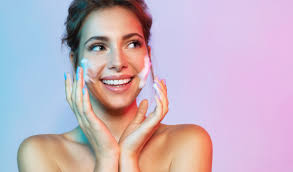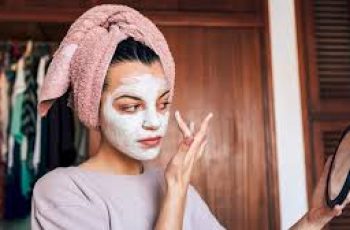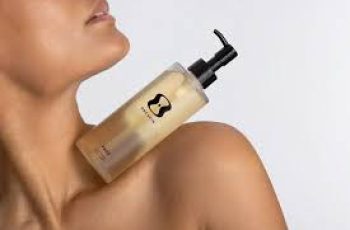
Can Azelaic Acid Be Used with Retin A?
Layering potent, powerhouse ingredients can often feel as though you are a wizard working over a bubbling cauldron at times. Especially if you find yourself reaching for the highest, and most effective actives, such as retin A and azelaic acid, admittedly, even their names sound like magic spells.
The question we have, is can azelaic acid be sued with retin A? This is something that we’ll work to get to the bottom of today, so stick around if you want some answers. But, before we do, we’ll have a brief recap of what each ingredient is able to deliver to the skin.
What are the benefits of retin A?
Retin A, a derivative of vitamin A, is a beloved skincare ingredient that is often applied to the face in potent topical formulas. The main benefits of using retin A in your daily skincare routine are the following.
Helps to regulate oily, and acne prone skin types by controlling the production of sebum.
Combats areas of hyperpigmentation, and dark spots helping them to become faded over time and less noticeable on the skin surface.
Increases the speed of the skin cell cycle ensuring new skin cells are on the outer surface giving the complexion a brightened, more even, smoother finish.
Targets signs of ageing, such as fine lines, wrinkles, and loss of elasticity.
There are some side effects you must remain aware of, and that is due to the high potency of retin A and its derivatives can cause increased skin sensitivity and severe dryness. You must also remember to use this potent powerhouse during your evening routine, as exposure to UV rays causes retin A to become ineffective. If you wanted to know more about retin A, we have a number of blog posts about it over on the Beauty Insiders.
What are the benefits of azelaic acid?
Derived from grains, such as wheat, rye, and barley, azelaic acid is certainly an unsung skin hero. Often overshadowed by other trending ingredients, this acid delivers an array of benefits for the skin, such as.
Contains anti-inflammatory properties meaning it can work at reducing any flare-ups in redness and rosacea.
Rich in anti-bacterial benefits so can combat acne, breakouts, and clear pores that are clogged by excess sebum, bacteria, and impurities.
Works on the outer surface of the skin and sloughs away the layer of dead skin cells keeping the skin vibrant and healthy.
Targets areas of hyperpigmentation, and dark spots leaving the complexion lightened, brightened, and with an even skin tone.
As I have already mentioned, azelaic acid is certainly under the radar when it comes to skincare ingredients. As effective as it is at improving the skin, it can take some to take effect, this will explain why professionals, and dermatologists rarely choose to prescribe it. This doesn’t, however, suggest you should avoid introducing azelaic acid into your daily routine. There are plenty of over-the-counter formulas that will deliver results and benefit the skin. Find out more about this clever ingredient, over on our dedicated blog post.
Now we’ve cleared up a few things, we can explore these two ingredients further and find the most effective way of using them together.
Can I use azelaic acid and retin A together?
In a word, yes, but only if you follow the application rules. By this I mean ensuring you layer these actives the correct way to gain optimal results, whilst avoiding any unwanted side effects.
There are a couple of different ways you can apply retin A and azelaic acid together, and that is to alternate when you apply each active throughout the week in the evenings. You can also decide to apply azelaic acid in the morning, followed with retin A for your evening skincare routine. You are also able to apply both during the same routine ensuring you leave 20 to 30 minutes between applications; just be sure you have built your skin’s tolerance to both ingredients before teaming them together. Having a brief break in between applications will allow enough time for the pH levels in the skin to rebalance and prepare for the next application. You can also team these two potent powerhouses with other hydrating actives that will lock hydration into the skin keeping the natural lipid barrier fully functioning and healthy.
Do I apply azelaic acid before or after retinol?
This depends on the product formula containing each active. What I mean by this is remembering there is a basic skincare application rule which means applying your skincare products from thinnest to thickest consistency. This will ensure each product can absorb into the skin thoroughly without having to compete with any barriers created by other thicker formulas.
You will often find that azelaic acid and retin A are formulated into similar products. To gain optimal results, I would suggest using an exfoliating toner enriched in azelaic acid, followed with a serum packed with hyaluronic acid, finished off with another serum or moisturiser containing retinol. Using these actives in the evening will result in each ingredient having the opportunity to work in the skin without any disruption caused from exposure to free radicals, such as pollution, UV light, and other environmental aggressors.
Is azelaic acid better than retin A?
I have spent some time explaining how azelaic acid and retin A work effectively together, but how do the benefits of these clever actives compare to each other? The easiest way to determine which one is better for you and your skin is taking into consideration these factors.
How sensitive your skin is and how prone to dryness it can be
Choosing which ingredient you decide to use in your routine will be very much dependant on the sensitivity of your skin. Retinol for example, is notorious drying ingredient, so if you have a dry skin type or reactive skin that can become easily irritated, you may be better off opting to use azelaic acid instead.
Establishing what skin concerns you are wanting to address
Although both azelaic acid and retinol contain similar traits, such as antibacterial properties, retinol is known for its impressive ability to combat signs of ageing, from fine lines, wrinkles, and loss of elasticity. So, if it’s ageing you are wanting to address, retinol is your best option. Otherwise, you can use azelaic acid to combat acne, breakouts, or clogged pores.
Figuring out the core root of the problem
If you are finding figuring out the root of the problem, I suggest consulting with a doctor, dermatologist, or medical professional to investigate each of these ingredients further to help conclude which would benefit the skin, and which would cause more concern.
I hope that today has answered some of your questions you had about using azelaic acid and retin A together. Don’t forget to come and find us on Instagram for more skincare tips, or find one of our skincare experts if you have any further questions.


